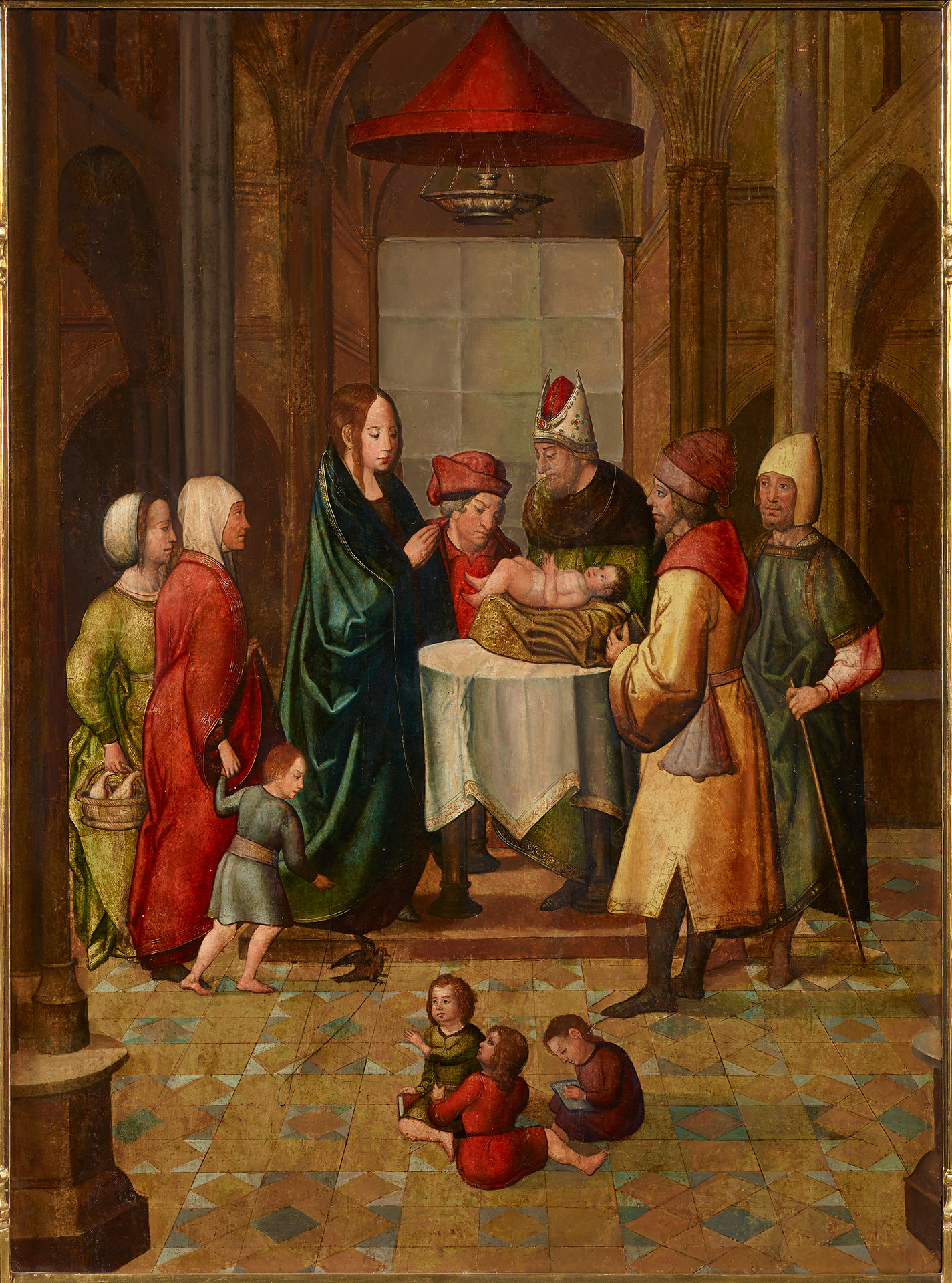
Anónimo seguidor de Juan de Borgoña (1495-1536)
The Presentation of Christ and the Purification of the Virgin Mary in the Temple
1535/1545
WORK INFORMATION
Oil on panel, 121 x 89 cm
Over half a century ago, these three panels were held at Torre Luzea (Guipúzcoa) as anonymous Castilian works. In 1987, Díaz Padrón attributed the first to the Master of Zamora and the other two to an artist he called the Master of Fuentelcarnero, having identified similarities to certain figures in a work from the altarpiece of that town in Zamora. The style of both painters, and that of the Master of Astorga, who has also been associated with these works, is indebted to Juan de Borgoña (documented as coming from Italy and active in Toledo from 1495 until his death in 1536). In recent years, documents and works of his son and namesake and of Lorenzo de Ávila, both active in Toro from shortly after 1530 following their collaboration with the master from Burgundy, have been published, but their style does not match that of the Luzea panels.
In 2013 the works were attributed to followers of Juan de Borgoña, undoubtedly based in Toledo, though the author of The Presentation of Christ and the Purification of the Virgin Mary in the Temple and The Adoration of the Magi was less skilled at drawing faces and giving the figures correct proportions.
In The Birth of Christ and the Annunciation to the Shepherds, the spatial organisation into receding depth and the compositional balance between the figures of Mary and Joseph, the shepherds and the animal heads, and the architecture and landscape all derive from Juan de Borgoña. He can also be associated with certain iconographic aspects, such as the naked Christ Child on a swaddling cloth atop the ashlar pedestal, Mary and Joseph in adoration, the angel announcing the good news to the shepherd in the distance, and the two shepherds arriving at the stable. The clarity and simplicity of the palette is altered by the iridescent sheen of the Virgin's mantle and the colour of her tunic; this detail, together with the elongated forms of the kneeling figures, dates the work to the second third of the 16th century.
Borgoña's influence is also perceptible, albeit more subtle, in the architectural setting and arrangement of the figures in the other two panels. The anonymous painter incorporated several peculiar iconographic elements not found in the gospel accounts of Saint Luke and Saint Matthew, respectively. For instance, in the temple scene he painted children reading or gazing at a fluttering bird, and depicted the priest taking Jesus into his arms with a cloth to avoid touching him. In the other panel, the black magus adopts an unusual stance, turning towards a page—curiously, not the black one—who hands him the vessel with the offering, but not before respectfully genuflecting on the left knee; another unusual detail is the inscription on the Virgin's halo, which reads "MATER REGIS ANGELORVM".
The three panels are nearly identical in size—and as they all depict episodes from the infancy of Jesus, it is possible that they were all part of the same altarpiece, perhaps one larger than a triptych. [José Manuel Cruz Valdovinos]

